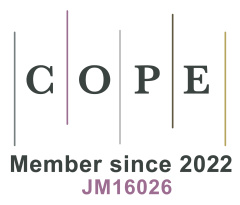Enhancing prefrontal cortex activity and attention distribution in children with ADHD-I/C: TOMATIS and PASS training effectiveness
Abstract
This study introduces three methodological innovations in enhancing children’s prefrontal cortex activity and executive functions using TOMATIS filtered audio therapy and PASS theory training. The interventions synergize to improve cognitive processing and neural plasticity. Divided into two stages, the initial focuses on physical and emotional adaptation, while the latter targets cognitive enhancement. After five weeks, significant improvements in attention and executive functions were observed in the treatment group compared to controls (P < 0.05). The study also explores AI exoskeletons and near-infrared technology to optimize therapy, offering new insights into ADHD treatment.
References
1. Bellato A, Perrott NJ, Marzulli L, et al. Systematic Review and Meta-Analysis: Effects of Pharmacological Treatment for Attention-Deficit/Hyperactivity Disorder on Quality of Life. Journal of the American Academy of Child & Adolescent Psychiatry. 2024. doi: 10.1016/j.jaac.2024.05.023
2. Liu A, Xu Y, Yan Q, et al. The Prevalence of Attention Deficit/Hyperactivity Disorder among Chinese Children and Adolescents. Scientific Reports. 2018; 8(1): 11169. doi: 10.1038/s41598-018-29488-2
3. Rantanen K, Vierikko E, Eriksson K, et al. Neuropsychological group rehabilitation on neurobehavioral comorbidities in children with epilepsy. Epilepsy & Behavior. 2020; 103: 106386. doi: 10.1016/j.yebeh.2019.06.030
4. Rubia K. Cognitive Neuroscience of Attention Deficit Hyperactivity Disorder (ADHD) and Its Clinical Translation. Frontiers in Human Neuroscience. 2018; 12. doi: 10.3389/fnhum.2018.00100
5. Jones DT, Graff-Radford J. Executive Dysfunction and the Prefrontal Cortex. CONTINUUM: Lifelong Learning in Neurology. 2021; 27(6): 1586–1601. doi: 10.1212/con.0000000000001009
6. Long Y, Pan N, Ji S, et al. Distinct brain structural abnormalities in attention-deficit/hyperactivity disorder and substance use disorders: A comparative meta-analysis. Translational Psychiatry. 2022; 12(1): 368. doi: 10.1038/s41398-022-02130-6
7. Yu X, Liu L, Sun L, et al. To explore the characteristics of emotional regulation in children with attention deficit hyperactivity disorder from multiple dimensions. Chinese Journal of Medicine. 2015; 95(39): 3184–3189.
8. Ma I, van Duijvenvoorde A, Scheres A. The interaction between reinforcement and inhibitory control in ADHD: A review and research guidelines. Clinical Psychology Review. 2016; 44: 94–111. doi: 10.1016/j.cpr.2016.01.001
9. Tu M, Liu Q, Yang F, et al. Meta-analysis of executive function and attention deficit hyperactivity disorder symptoms in preschool children: the role of inhibitory control and working memory. China Special Education. 2021; (02): 67–76.
10. Zhang S, Wang W, Zhong S, et al. Semantic understanding and working memory in children with attention deficit hyperactivity disorder. Chinese Journal of Mental Health. 2016; 30(10): 732–737.
11. Wang P, Kou C, Jiang J, et al. Multidimensional working memory characteristics of children with attention deficit hyperactivity disorder. Chinese Journal of Mental Health. 2019; 33(06): 411–415.
12. Yao J, Jin M, Liu J, et al. Executive function in children with clinical subtypes of attention deficit hyperactivity disorder. Chinese Journal of Behavioral Medicine and Brain Science. 2014; 23(11): 986–988.
13. Ji Y, Fan Y, Zhang T, et al. Study on social-related behavioral problems and executive function in children with attention deficit hyperactivity disorder and autism. Journal of Clinical Pediatrics. 2018; 36(08): 621–625.
14. Meyer KN, Santillana R, Miller B, et al. Computer-based inhibitory control training in children with Attention-Deficit/Hyperactivity Disorder (ADHD): Evidence for behavioral and neural impact. PLOS ONE. 2020; 15(11): e0241352. doi: 10.1371/journal.pone.0241352
15. Shen F, Zhou H. Advances in the etiology and neuroimaging of children with attention deficit hyperactivity disorder. Frontiers in Pediatrics. 2024; 12. doi: 10.3389/fped.2024.1400468
16. Pang T, Ding N, Zhao Y, et al. Novel genetic loci of inhibitory control in ADHD and healthy children and genetic correlations with ADHD. Progress in Neuro-Psychopharmacology and Biological Psychiatry. 2024; 132: 110988. doi: 10.1016/j.pnpbp.2024.110988
17. Zhu F, Zhu X, Bi X, et al. Comparative effectiveness of various physical exercise interventions on executive functions and related symptoms in children and adolescents with attention deficit hyperactivity disorder: A systematic review and network meta-analysis. Frontiers in Public Health. 2023; 11. doi: 10.3389/fpubh.2023.1133727
18. An W, Li J, Wang Y, et al. Research progress of inhibitory control in children and adolescents with autism spectrum disorder. China Special Education. 2019; (04): 32–39.
19. Chuang LY, Tsai YJ, Chang YK, et al. Effects of acute aerobic exercise on response preparation in a Go/No Go Task in children with ADHD: An ERP study. Journal of Sport and Health Science. 2015; 4(1): 82–88. doi: 10.1016/j.jshs.2014.11.002
20. Uzefovsky F, Allison C, Smith P, et al. Brief Report: The Go/No-Go Task Online: Inhibitory Control Deficits in Autism in a Large Sample. Journal of Autism and Developmental Disorders. 2016; 46(8): 2774–2779. doi: 10.1007/s10803-016-2788-3
21. Costa A, Faria L. Implicit Theories of Intelligence and Academic Achievement: A Meta-Analytic Review. Frontiers in Psychology. 2018; 9. doi: 10.3389/fpsyg.2018.00829
22. El-Tellawy MM, Ahmad AR, Saad K, et al. Effect of hyperbaric oxygen therapy and Tomatis sound therapy in children with autism spectrum disorder. Progress in Neuro-Psychopharmacology and Biological Psychiatry. 2022; 113: 110457. doi: 10.1016/j.pnpbp.2021.110457
23. Vélez-Guerrero MA, Callejas-Cuervo M, Mazzoleni S. Artificial Intelligence-Based Wearable Robotic Exoskeletons for Upper Limb Rehabilitation: A Review. Sensors. 2021; 21(6): 2146. doi: 10.3390/s21062146
Copyright (c) 2025 Author(s)

This work is licensed under a Creative Commons Attribution 4.0 International License.
Copyright on all articles published in this journal is retained by the author(s), while the author(s) grant the publisher as the original publisher to publish the article.
Articles published in this journal are licensed under a Creative Commons Attribution 4.0 International, which means they can be shared, adapted and distributed provided that the original published version is cited.



 Submit a Paper
Submit a Paper
